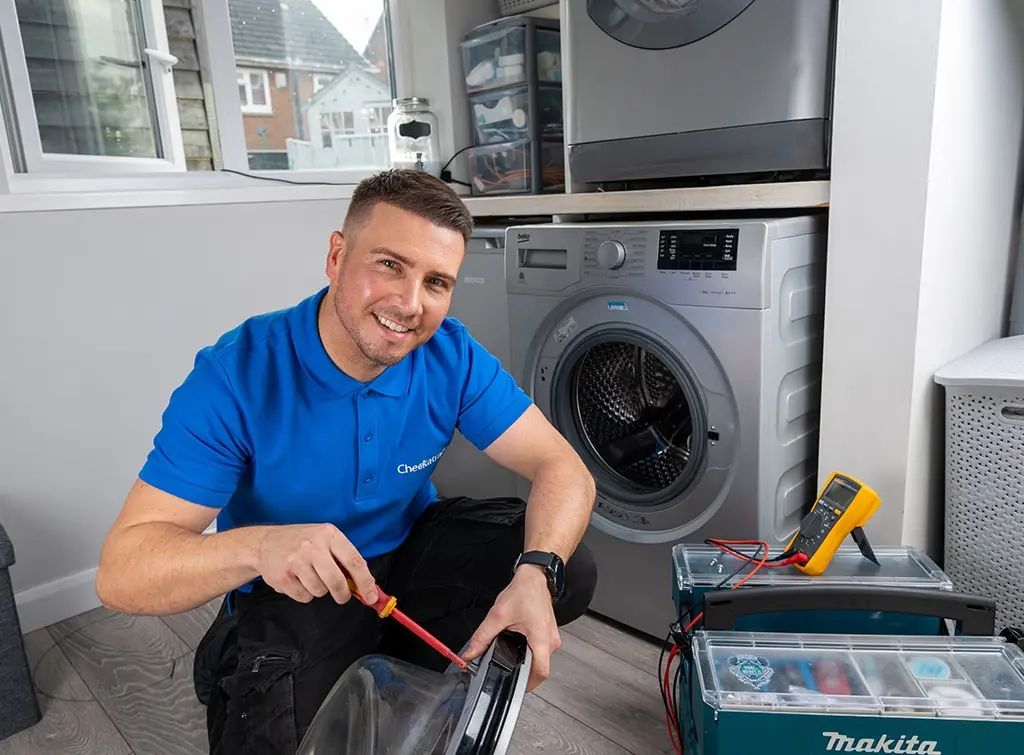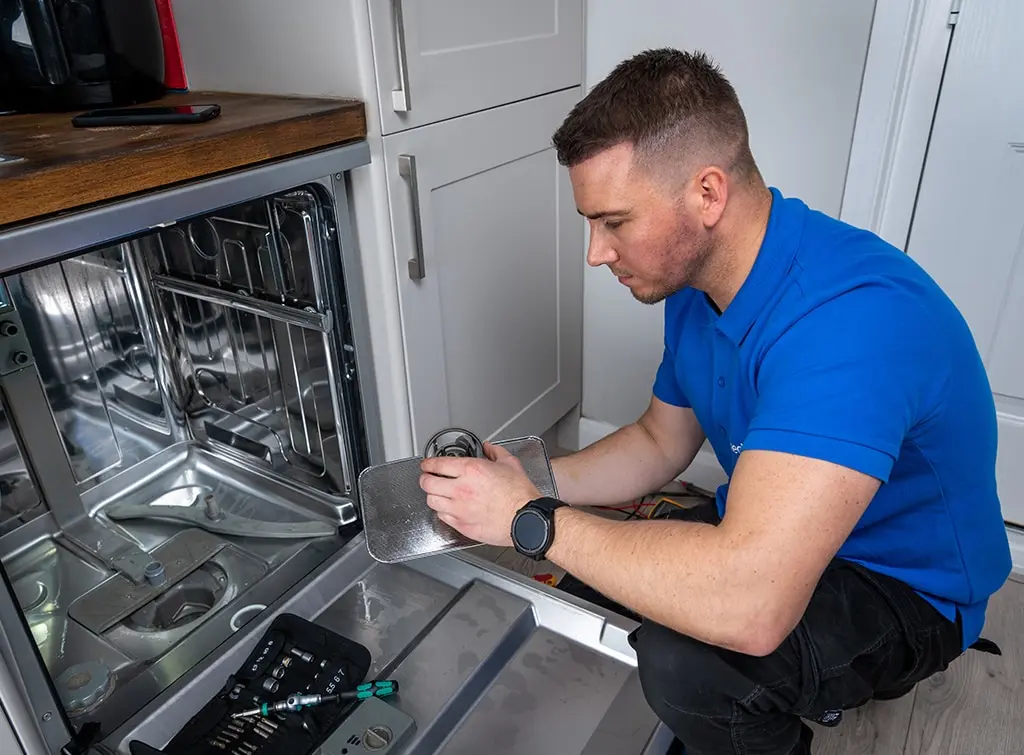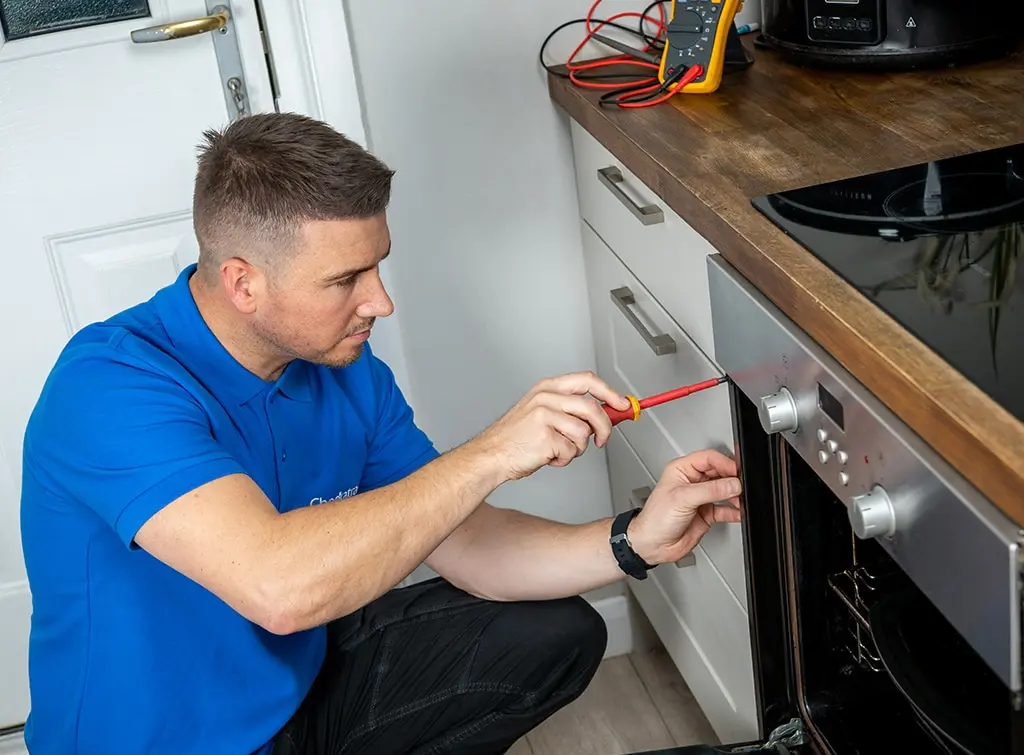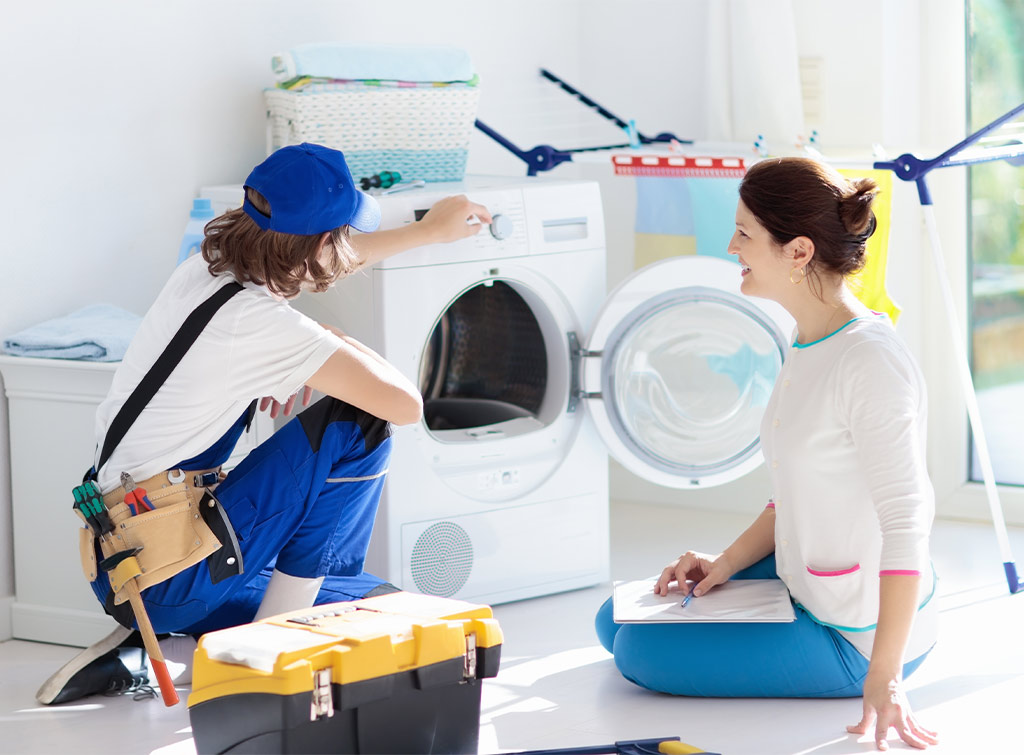Blog>Expert Advice>The ultimate guide to appliance maintenance
Last updated: 9 June 2023
The ultimate guide to appliance maintenance
In this post, we guide you through how to do basic appliance maintenance on some of the home appliances you depend on most.

Appliance maintenance may not be the most exciting activity, but there are some really valid reasons why it should not be ignored.
Consider how much we rely on our home appliances. The dishwasher, washing machine, and fridge. How would you cope without them?
Appliances are an integral part of our daily lives, making life easier and more convenient. Regular maintenance is essential for them to function efficiently and last as long as possible.
Prefer to get someone in? To find an appliance maintenance technician that we've checked and approved in your area, enter your postcode into the search box below.
See the tradespeople we've checked and recommend for your job
5 reasons to prioritise appliance maintenance
1. Maximise efficiency
Over time, dust, dirt, and debris can build up in filters, coils, and vents, leading to reduce performance.
This can not only increase the appliance's energy consumption but in extreme cases, can cause a fire hazard.
2. Prolong the appliance lifespan
Appliances aren't cheap. Ideally, we want them to last as long as possible.
Regular appliance maintenance can help to keep them running smoothly and extend their lifespan.
3. Enhance the safety of your appliance
Poorly maintained appliances can lead to electrical malfunctions, gas leaks, and even fire.
Regular appliance maintenance can help to identify and resolve potential safety issues quickly.
4. Save money
While appliance maintenance is an investment in terms of your time, you'll reap the rewards in cost savings.
For example, checking the pipework on your washing machine and dishwasher regularly is a minor task compared to dealing with the water damage caused by a leak.
5. Environmental benefits
A well-maintained appliance is more energy-efficient, which reduces your home's carbon footprint.
This has the added bonus of reducing your energy bills.
See the tradespeople we've checked and recommend for your job
Washing machine maintenance
If you've ever been faced with the sight of water pouring out across the floor underneath your washing machine, you'll appreciate the importance of washing machine maintenance.
To avoid potentially costly problems with your washing machine, follow these simple maintenance tips:
1. Clean the drum
Wipe the drum regularly with a damp cloth to remove any dirt or residue buildup.
Run an empty cycle with hot water and white vinegar or a special washing machine cleaner to keep your appliance clean and fresh.
2. Check and clean the filters
Clean and/or replace the filters in your washing machine as recommended by the manufacturer.
This will help to prevent blockages and ensure efficient water flow.
3. Inspect hoses and connections
Hoses and connections can be subject to wear and tear and become loose over time.
Inspect the hoses on your washing machine regularly for any signs of wear, cracks, or leaks. At the same time, tighten any loose connections to prevent leaks.
4. Balance the load
Did you know that overloading your washing machine can strain its components and cause unnecessary vibrations?
Check your manufacturer's guidelines for load capacity to maintain smooth operation.
5. Use the right detergent
Being overzealous with your washing detergent can cause a buildup of soap residue, which can affect performance.
Try to stick to the recommended quantities for the load you're washing.
6. Avoid overusing fabric softeners
Similarly, excessive fabric softener can clog filters and prevent water from draining properly.
Baking soda, dryer balls, and vinegar are good alternatives to fabric softener.

Dryer maintenance
Tumble dryer maintenance is crucial for the safe and efficient operation of the appliance.
Allowing lint to build up reduces airflow forcing the machine to work harder and less efficiently. This results in longer drying time, which means higher energy consumption and utility bills.
It can also cause the components to overheat, which can cause sufficient damage to warrant a new machine.
Worse case, poor dryer maintenance can be a fire hazard.
Here's how to perform basic dryer maintenance to help it function efficiently, reduce fire risks, and prolong its lifespan.
1. Clean the lint filter
After each drying cycle, remove the lint from the lint trap.
Every now and again, rinse the lint filter to remove any residue buildup.
2. Clear the venting system and exhaust ducts
Every few months, unplug the dryer from the power source and remove the vent hose from the back of the machine.
Using a vacuum cleaner or lint brush, clean out any lint that's accumulated in the hose.
You should also periodically inspect the exhaust ducts both inside and outside to make sure they're clear of lint and debris.
3. Clean the drum
To ensure the dryer works efficiently, wipe the inside of the drum every so often to remove any residue buildup.
4. Check the power cable and connections
As with all appliances, check the cable for any signs of fraying or damage and make sure the plug is securely connected to the outlet.
Should you spot any issues, contact a qualified professional for repairs.
See the tradespeople we've checked and recommend for your job
Dishwasher maintenance
Regular dishwasher maintenance needn't be time-consuming, but it will help to ensure your machine cleans efficiently, stays fresh, and lasts.
1. Clean the filters
Get into the habit of removing the filter, emptying the contents into the bin, and rinsing the filter under the tap.
2. Clear the spray arms and nozzles
Check the spray arms and nozzles for any debris or mineral deposits.
Use a toothpick to unclog the spray holes to ensure the water can flow freely during the wash cycle.
3. Wipe down the interior
Remove any food particles or residue from the interior of the machine by wiping it down with a damp cloth.
4. Run an empty cycle
To reduce mineral deposits and unpleasant odours, run an empty dishwasher cycle with a cup of white vinegar in a dishwasher-safe container on the top rack.
5. Check the door seal
A faulty seal can lead to leaks, so check it regularly for signs of wear and tear. It's also advised to clean the seal on a regular basis.
6. Use quality dishwasher detergent
Follow the manufacturer's instructions for the right amount of detergent to prevent residue buildup. And select a detergent that's suitable for your dishwasher and water hardness.

Fridge maintenance
Again, if you ignore fridge maintenance, you risk impacting its performance, efficiency, and lifespan.
1. Clean the condenser coils
The condenser coils are located on the back or bottom of the fridge. If they're clogged with dirt and debris, your fridge will work harder to keep things cool, which means higher energy bills.
Every six months, unplug the fridge and gently vacuum the coils.
2. Clear the drain hole
The drain hole can be found inside the fridge, usually on the back wall.
Use warm water and detergent or a pipe cleaner to clear any built-up food particles or debris.
3. Clean the inside of the fridge
Using a mixture of warm water and detergent, clean the shelves, drawers, and door seals to remove any spills, stains, or residue.
When replacing items, avoid overcrowding and blocking the vents to allow proper airflow.
4. Check the door seals
Damaged or worn-out door seals can lead to air leaks, which compromises the efficiency of your fridge.
Clean the seals with a damp cloth and replace them if necessary.
5. Check the temperature
Make sure your appliance is set to the optimal temperature range as per your manufacturer's recommendations.
Looking for a technician to service or repair your home appliances? Put your postcode in the box below to see who comes highly recommended.
See the tradespeople we've checked and recommend for your job
Freezer maintenance
Failing to maintain your freezer can mean that it becomes inefficient, which could cause food spoilage and increased energy bills. It can also cause parts of the freezer to malfunction, which can result in costly repairs.
1. Empty and organise
Every few months, empty your freezer and discard expired items. After defrosting, replace your freezer contents in an organised way for easy access.
2. Defrost and clean
To defrost the freezer, unplug it and place towels around the base to catch melting ice and water. Leave the door open to allow the ice to melt naturally.
Once the ice has melted, clean the interior, including shelves, drawers, and walls, with mild detergent and warm water.
Rinse with clean water and dry thoroughly before restocking.
3. Check the door seal and temperature
The door seal, or gasket, can allow warm air to enter the freezer if faulty. This can cause temperature fluctuations and ice buildup.
Clean the seal regularly and replace it if necessary.
Your freezer should be set at or below 0°F (-18°C) to ensure the safe storage of frozen foods. Check and monitor your freezer temperature on a regular basis.
Oven maintenance

It's important to show your oven a bit of TLC every now and again to make sure it heats efficiently, bakes evenly, and doesn't pose a fire hazard.
Refer to your oven manufacturer's manual for specific maintenance guidelines and recommendations, but as a guide:
1. Clean
Regularly remove any spills, grease, or food residue using a non-abrasive cleaner and warm, soapy water on the interior oven walls and racks. Rinse and dry the racks before replacing them.
Wipe the oven door both inside and out using a glass cleaner or a mixture of vinegar and water.
Don't forget to clean the extractor hood too to ensure proper airflow.
If you have a self-cleaning oven, follow the manufacturer's instructions and ventilate the kitchen properly.
2. Check the door seals
Worn or damaged door seals can cause heat loss and affect the oven's efficiency, so it's worth checking them regularly.
Don't have time or inclination for DIY oven maintenance? Search for local oven cleaning and maintenance firms using the box below.
See the tradespeople we've checked and recommend for your job
Gas stove maintenance
Regular gas stove maintenance will ensure its safe and efficient operation.
There are a number of steps you can take to make sure your gas stove stays in good working order.
1. Cleaning
Wash all the removable parts in warm, soapy water with a non-abrasive sponge and dry thoroughly.
Clean the burner openings with a soft brush or toothpick.
Wipe the control knobs and stove surfaces with a damp cloth or sponge using mild detergent if necessary. Dry and shine with a microfibre cloth.
Clean any ventilation filters regularly to prevent grease buildup and maintain adequate airflow.
2. Check the gas burner flames
The flames from a gas stove should be blue with a consistent height and shape. Yellow, uneven, or irregular flames indicate a problem with combustion.
To clean the burner flames, turn off the stove and let it cool down. Gently wipe the burner heads with a cloth dampened with vinegar or mild detergent.
3. Inspect the gas lines and connections
Every now and again, inspect the gas lines and connections for signs of leaks or damage.
Apply a mixture of water and washing-up liquid to the gas connections and lines.
If bubbles form, it indicates a gas leak. Turn off the gas supply immediately and contact a Gas Safe Registered engineer without delay.
See the tradespeople we've checked and recommend for your job
Find a qualified and experienced appliance maintenance technician near you
A professional appliance maintenance technician will take care of your home appliances easily and efficiently.
To find a trusted and reliable technician that we've checked and approved, simply enter your postcode into the box below.
More Expert Advice Articles
More Appliance Services / Repair Articles
See the tradespeople we've checked and recommend for your job





